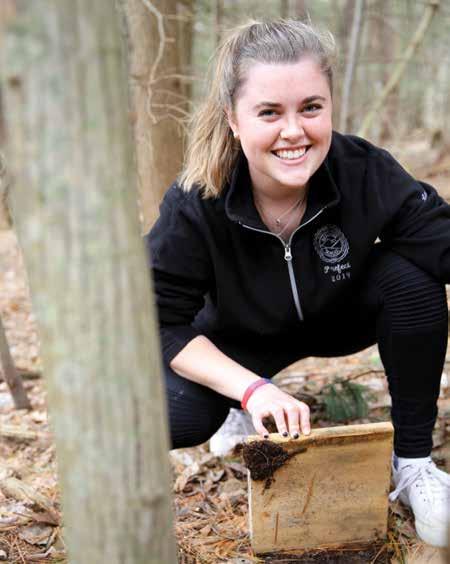Campus News
DIGGING FOR ANSWERS Students explore real-world ecological issues in the new Advanced Environmental Science Research class. by Hannah Van Sickle
Say
ler
Senior Lodge. Students chose a research project—in Reed’s case, the salamanders—and pursued answers to real-world ecological issues. “It was a bit daunting at first,” Reed says of her endeavor to track the species’ population density in its rural habitat. Despite the Jefferson salamanders living in close proximity to healthy vernal pools behind East Campus, she feared the community knew little about the species. This, coupled with the fact that salamanders are unpredictable, quickly gave shape to Reed’s research. “I became interested in the ways in which our school community affects the species near us, and I learned so much this year.” At the helm of AESR is teacher Cait Ward ’08, who says the curriculum allows students to apply knowledge they gained in AP Environmental Science to potentially advance science
by
Do
m
Sophie Reed ’19 studying endangered Jefferson salamanders here in Sheffield
The Jefferson salamander has a lot on its small shoulders: it regulates the food chain to ensure a vibrant ecosystem. If the population of Jefferson salamanders is faltering, the environment might be, too. Sophie Reed ’19 wondered: How were the Jefferson salamanders that lived 6
Berkshire Bulletin
at the base of the Mountain faring? She decided to investigate further. Reed was one of 18 students enrolled in Berkshire’s new yearlong Advanced Environmental Science Research (AESR) course, housed in a tech-free classroom in the rededicated Chevalier
Ph
ot
o
Jefferson salamander is a mole salamander that spends larger amounts of time underground than other breeds. They can be seen above ground during the mating season, which takes places in early spring.



